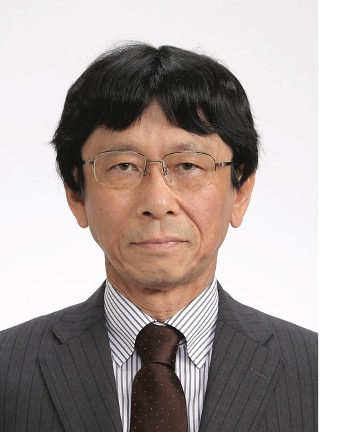2023 Awardee - Dr. Taroh Kinoshita
 The Karl Meyer Lectureship Award was established in 1990 to honor the distinguished career of Karl Meyer and his outstanding contributions to the field of Glycobiology. This international award is given to well-established scientists with currently active research programs who have made widely recognized major contributions to the field of Glycobiology. The 2023 Karl Meyer Award will be presented to Dr. Taroh Kinoshita, Distinguished Professor and Specially-appointed Professor of the Center for Infectious Disease Education and Research, Research Institute for Microbial Diseases and WPI Immunology Frontier Research Center, Osaka University. The Karl Meyer Lectureship Award was established in 1990 to honor the distinguished career of Karl Meyer and his outstanding contributions to the field of Glycobiology. This international award is given to well-established scientists with currently active research programs who have made widely recognized major contributions to the field of Glycobiology. The 2023 Karl Meyer Award will be presented to Dr. Taroh Kinoshita, Distinguished Professor and Specially-appointed Professor of the Center for Infectious Disease Education and Research, Research Institute for Microbial Diseases and WPI Immunology Frontier Research Center, Osaka University.
Dr. Kinoshita pioneered genetic approaches to identify numerous enzymes and enzyme complexes involved in the biosynthesis and intracellular trafficking of glycosylphosphatidylinositol (GPI)-anchored proteins. In the 1980’s, while the structures and biosynthetic pathways of GPI-anchored proteins were starting to be revealed by taking advantage of the abundance of GPI-anchored proteins in African trypanosomes and other protozoan parasites, the genetic intractability of these parasites made the identification of genes/enzymes involved in GPI biosynthesis challenging. Therefore, Taroh took advantage of genetic tools available in mammalian tissue culture cells to identify genes involved in GPI anchor biosynthesis. His identification of PIGA as the gene encoding a component of the GlcNAc transferase that initiates GPI biosynthesis was published in Science in 1993 as his first seminal contribution to the field of glycobiology. The tireless efforts of his laboratory during subsequent decades led him to discover more than 20 genes involved in the pathway. Furthermore, his detailed biochemical analysis of the protein components revealed the first step of the pathway is mediated by a large membrane protein complex consisting of PIGA and six other protein components. Similarly, the GPI transamidase, which attaches the preformed GPI anchor precursor to nascent proteins, was shown mainly by Taroh’s team to be a heterocomplex of five proteins.
In addition to biochemical analyses of GPI biosynthetic genes using tissue culture cells, his team pioneered the use of whole organisms to demonstrate their physiological importance. In a 1993 publication in Cell, Taroh and his team showed somatic mutations of the PIGA gene in human patients led to a GPI-anchored protein deficiency, triggering the disease progression of paroxysmal nocturnal hemoglobinuria, an acquired genetic disease with very poor prognosis. To further illuminate the physiological significance of GPI-anchored proteins, Taroh established mouse models and demonstrated PigA is an essential gene in mouse and PigA as well as other genes in the pathway play important roles in tissue development. In addition, his laboratory was the first to show GPI biosynthesis is essential in the blood stream form of Trypanosoma brucei.
Taroh did not stop there. His team established an elegant reporter system to identify mutants of mammalian tissue culture cells defective in the modification and trafficking of GPI-anchored proteins. Amongst the post GPI-attachment to proteins (PGAP) genes he discovered was the ER-resident phosphodiesterase PGAP5 that removes the ethanolamine phosphate residue from the second mannose of the GPI core glycan, which is critical for the efficient trafficking of GPI anchored proteins from ER to Golgi apparatus. Taroh remains active in this endeavor, recently reporting the identification of a Golgi-resident GalNAc transferase involved in GPI side chain synthesis and the discovery of a novel scramblase involved in transferring GPI biosynthetic intermediates across the ER.
Taroh also made significant contributions to the establishment of inherited GPI deficiency as a new class of congenital disorders of glycosylation (CDG). Taroh and his collaborators clarified that inherited mutations in several GPI biosynthetic genes lead to severe congenital disorders including thrombosis, epilepsy, microcephaly, mental retardation and other developmental disorders. In one patient, a mutation was found in the promoter region of the PIGM gene that encodes a GPI mannosyltransferase and the mutation resulted in histone hypoacetylation at the PIGM promoter. Remarkably, the histone deacetylase inhibitor butyrate increased PIGM transcription in vitro and made the patient completely free of seizures!
For his excellent and pioneering scientific contributions, Taroh has received numerous awards and honors, including the 19th Osaka Science Prize (2001, Osaka Science & Technology Center), International Glycoconjugate Organization (IGO) Award (2015, IGO), Takeda Medical Prize (2017, Takeda Science Foundations) and Osamu Hayaishi Memorial Prize (2021, Ono Medical Research Foundations). Taroh also received the prestigious Medal with Purple Ribbon from the Japanese Government in 2018.
In summary, Taroh is a true pioneer and role model in the field of glycobiology and the 2023 Karl Meyer Lectureship Award recognizes Dr. Taroh Kinoshita’s seminal contributions not only to our basic understanding of GPI biosynthesis and trafficking, but also to the appreciation of how defects in GPI biosynthesis translate into many human diseases.
|